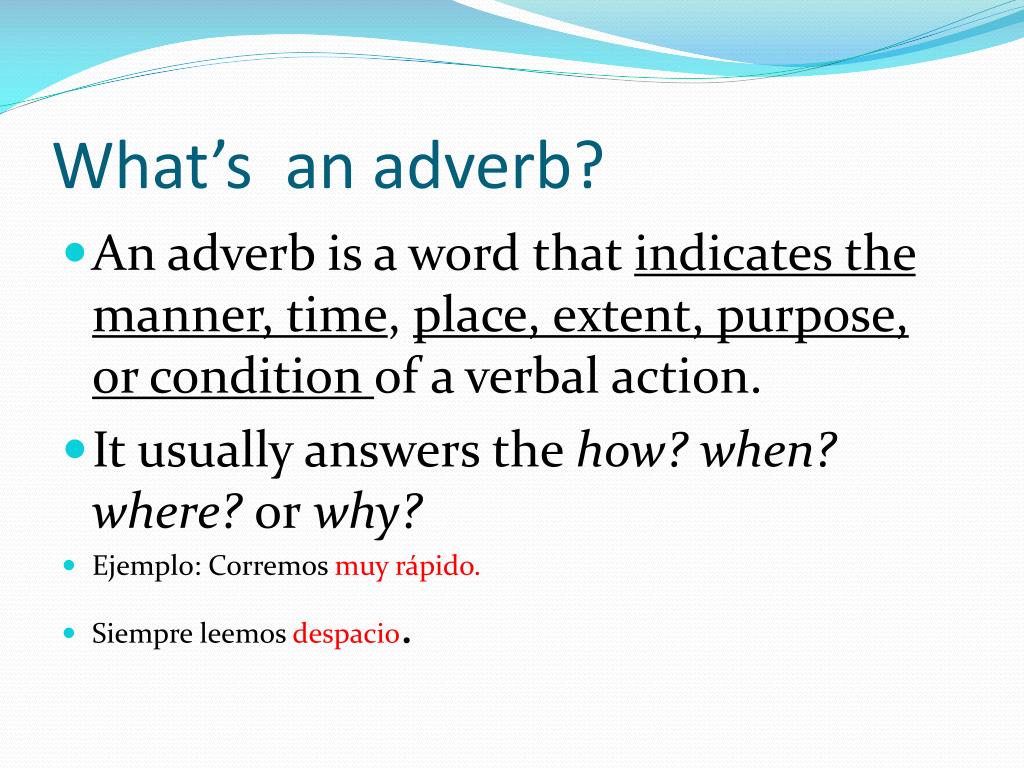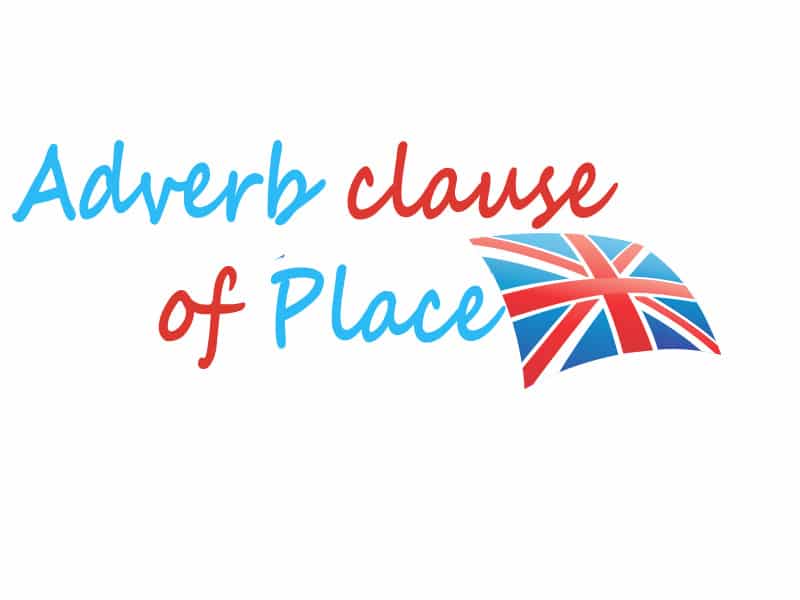Adverbial Clause Of Place : Adverbs Of Place Using and Examples - English Grammar Here / The subjunctive mood is used in adverbial clauses of time and place after the conjunctions whenever and wherever;
Adverbial Clause Of Place : Adverbs Of Place Using and Examples - English Grammar Here / The subjunctive mood is used in adverbial clauses of time and place after the conjunctions whenever and wherever;. She heard the door open while she was watching television. Never walk behind a horse in case it kicks out at you. (like all clauses, an adverbial clause contains a subject and a verb.) this rule works well with most adverbial clauses (which tend to be adverbs of time, place, or condition). An adverbial place clause tells where the action described by the main verb takes place. In these lessons we build on the.
In these lessons we build on the. It means the clause modifies a verb, an adjective, or another adverb. As with all clauses, it contains a subject and predicate, though the subject as well as the (predicate) verb may sometimes be omitted and implied. They are both adverbs of time. An adverbial clause is a dependent clause that functions as an adverb.

An adverbial clause of place describes where something has occurred or will occur.
The subjunctive mood is used in adverbial clauses of time and place after the conjunctions whenever and wherever; (like all clauses, an adverbial clause will contain a subject and a verb.) for example: Adverb clauses (adverbial clauses) are groups of words with a subject and a verb that function as adverbs. He always put things where nobody in their senses would look for them. Keep hitting the gong hourly. Download pdf adverbial clauses a wide variety of different conjunctions are used to introduce. Adverbial clauses of place, time, comparison. A clause is a group of words containing a subject and predicate or a finite verb. Like all clauses, an adverb clause has a subject and a predicate. Like adverbs, adverbial clauses indicate time, place, condition, contrast, etc. There are many different types: Sets where the action of the main clause takes place. Once learners are able to identify a clause, they will then be required to determine what type of clause has been used.
If the adverbial clause follows the main clause in a sentence, do not place a comma between the two. It normally answers the questions: The most common subordinating conjunctions are where adverbial clauses of condition describe the conditions necessary for specific actions or events to happen. The second clause can be turned into an. However, an adverb clause is a dependent clause—so, it can never be a sentence.

The general meaning of the clause is usually indicated by the word which introduces it.
An adverbial clause is a subordinate clause that act as the adverb in a sentence. This type of clause usually employs. Never walk behind a horse in case it kicks out at you. As soon as he received the telegram, he left for his native place. An adverb clause (also called adverbial clause) is a subordinate clause (i.e., dependent clause) acting as an adverb. He always put things where nobody in their senses would look for them. Clauses of place and time. The subjunctive mood is used in adverbial clauses of time and place after the conjunctions whenever and wherever; All adverbs (including adverbial clauses) can usually be categorized as one of the following She heard the door open while she was watching television. In these cases the clauses have an additional concessive meaning. Jim miller explains this in more detail in the excerpt from an introduction to english syntax below. Adverbial clauses of place are introduced by the conjunctions where and wherever (где бы ни, куда бы ни).
If the adverbial clause follows the main clause in a sentence, do not place a comma between the two. You can also see what they are used for and. She heard the door open while she was watching television. An adverbial clause is a dependent clause that functions as an adverb. Adverb clauses (adverbial clauses) are groups of words with a subject and a verb that function as adverbs.

I put it where nobody would find it.
The second clause can be turned into an. In these lessons we build on the. There are many different types: (like all clauses, an adverbial clause contains a subject and a verb.) this rule works well with most adverbial clauses (which tend to be adverbs of time, place, or condition). An adverbial clause of place shows the place of the action expressed in the principal clause. There are several types of adverb clauses. Adverbial clauses of place are introduced by the conjunctions where and wherever (где бы ни, куда бы ни). He always put things where nobody in their senses would look for them. Adverbial clauses of place the place of the action of the verb of the main clause identified by answering the question where introduced by the subordinators 5. An adverbial clause is a dependent clause that functions as an adverb. They are both adverbs of time. As soon as he received the telegram, he left for his native place. It normally answers the questions:
Komentar
Posting Komentar